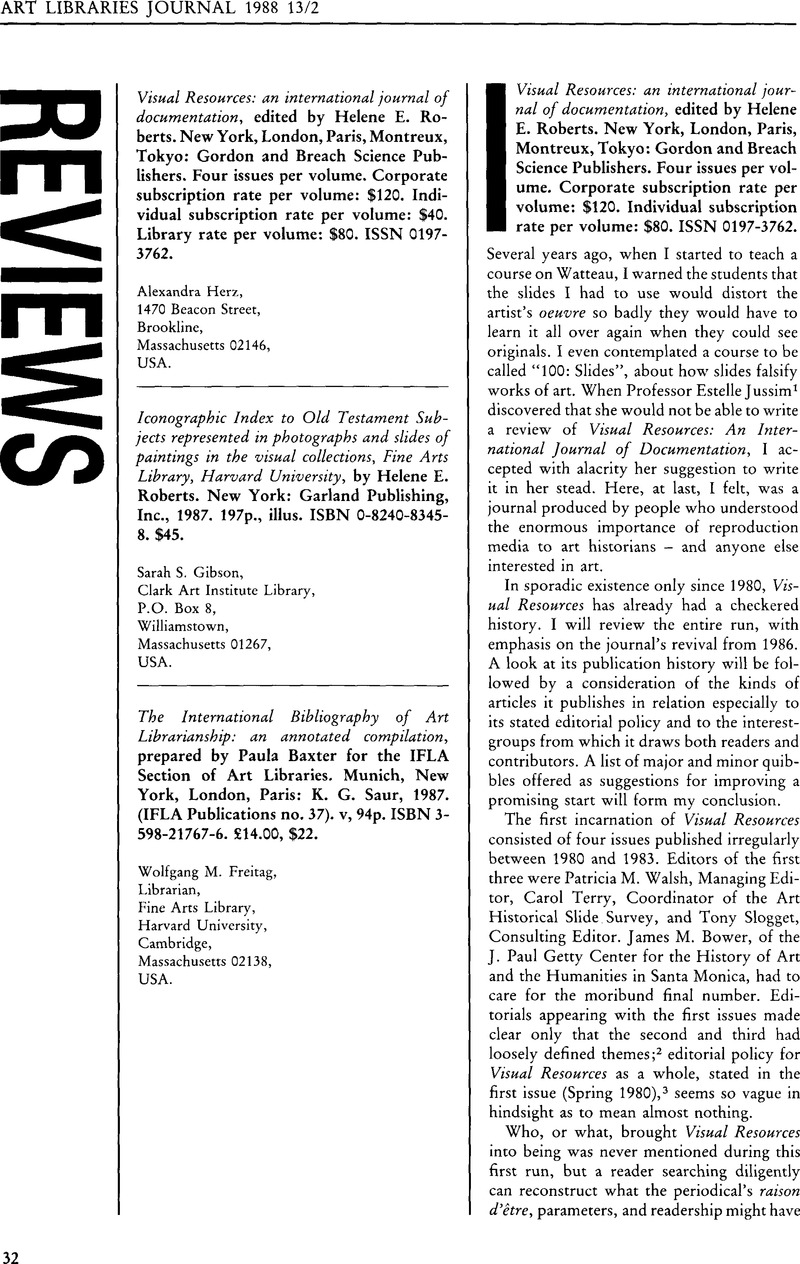2. The second issue (v.
l, no.2,
3,
Fall
1980/
Winter
1981, p.
122) focused on prehistoric and ancient art, while the third (v.
2, no. 1,2,
3,
Fall/Winter
1981/
Spring
1982, p.
2) concentrated on sources for the photographic documentation of Roman and Etruscan art. The last issue (v.
3, no.
l, August
1983) had no editorial. The first three issues were published by Iconographic Publications, the fourth and final number of the first run was published by Gordon and Breach.
Google Scholar 